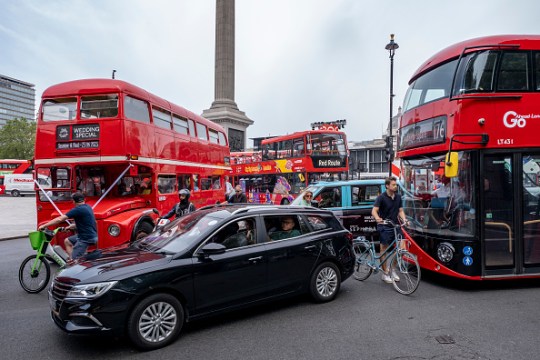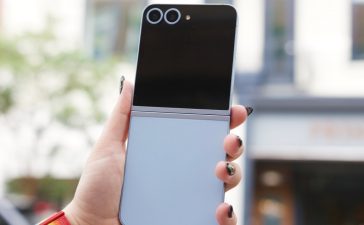Red, amber, green – traffic lights are pretty much the same the world over, and have been for more than a century.
However, they could one day have a fourth colour added to help traffic flow around driverless vehicles, scientists have proposed.
Autonomous vehicles (AV) are still a relatively new concept, with no fully driverless cars on the road yet.
In California and Arizona self-driving taxi firm Waymo has come close, achieving what is known as SAE4, of five levels. Other AVs including Teslas are also becoming popular.
Self-driving vehicles are not currently allowed on UK roads with the exception of a few trials, but could be as soon as 2026 under the Automated Vehicles Act.
All this means that soon, there will be a mix of human-steered cars and driverless vehicles mingling on the streets.
To help make this merger smoother, engineers at North Carolina State University are proposing a ‘white light’ at traffic lights, which will allow self-driving cars to help with traffic flow and let human drivers understand what is going on.
Study lead Dr Ali Hajbabaie said idea was to tap into the computing power of the AVs themselves to figure out which vehicles are where.
‘The white phase concept incorporates a new traffic signal, so that human drivers know what they are supposed to do,’ he said.
‘Red lights will still mean stop. Green lights will still mean go. And white lights will tell human drivers to simply follow the car in front of them.’
Dr Hajbabaie and his team, who published the paper in the journal of Computer-Aided Civil and Infrastructure Engineering, created a series of computer simulations that helped visualise how the new traffic light system would work.
The concept would see AVs communicate wirelessly to each other and with the computers that control the traffic signals. When enough AVs are approaching the intersection, the new traffic light system will be activated.
The white light would indicate to people that the AVs are coordinating their movements to move traffic through the intersection, and any non-automated vehicles would just need to follow the vehicle in front of them.
But for the majority of the time, until almost all cars are AVs, the standard red, yellow and green lights will be used and the system will be function as it has for over a hundred years.
The researchers further expanded their work to include pedestrians, and they found that the white phase concept still improves traffic efficiency for both vehicles and pedestrians.
A history of traffic lights
Traffic lights have a long history and first appeared more than 150 years ago, first outside the Houses of Parliament on December 10, 1868. This rudimentary version saw red and green gas lights being operated during the night, controlled by a police constable.
Unfortunately, a few weeks later on January 2, the gas lines exploded.
The first electric traffic lights were first installed in Ohio in 1914, and the three colour system was first used in Detroit in 1919.
In the UK, three colour manually operated traffic lights first appeared in Piccadilly, in 1926 and automatic traffic lights appeared in Princes Square, Wolverhampton in 1927.
He said implementing this system would improve travel time, fuel efficiency and safety for all people using the roads.
Dr Hajbabaie said: ‘If at some point in the future we see almost universal adoption of AVs, our models suggest that delays at intersections would decrease by more than 25%.
‘More realistically, we will eventually see a lower percentage of wirelessly connected AVs on the road, but there would still be meaningful improvements in traffic time.’
Get in touch with our news team by emailing us at webnews@metro.co.uk.
For more stories like this, check our news page.
MORE : Putin ‘uses vacuum bomb’ to strike Ukraine’s forces after Kursk attack
MORE : Banksy confirms fish on City of London police sentry box as his seventh mystery artwork
MORE : Ex-Strictly star Brendan Cole exposes truth about ‘rough’ partnerships with celebs
Get your need-to-know
latest news, feel-good stories, analysis and more
This site is protected by reCAPTCHA and the Google Privacy Policy and Terms of Service apply.
















